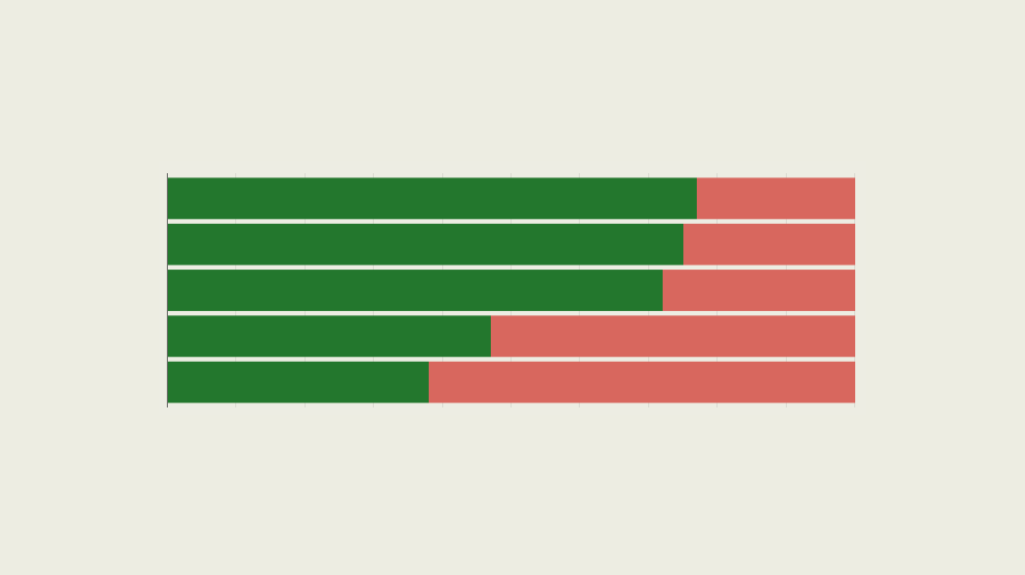Congressional Testimony: Improving Security and Facilitating Commerce with Mexico at America's Southern Border
Congressional Testimony: Improving Security and Facilitating Commerce with Mexico at America's Southern Border
Recognition of shared U.S.-Mexican responsibility for security and prosperity fosters confidence to expand the trade agenda, explains COA's Eric Farnsworth in congressional testimony.
IMPROVING SECURITY AND FACILITATING COMMERCE WITH MEXICO AT AMERICA’S SOUTHERN BORDER
FIELD HEARING BEFORE THE U.S. HOUSE OF REPRESENTATIVES
COMMITTEE ON FOREIGN AFFAIRS
SUBCOMMITTEE ON THE WESTERN HEMISPHERE
TUCSON, ARIZONA
DECEMBER 9, 2013
ERIC FARNSWORTH
VICE PRESIDENT
COUNCIL OF THE AMERICAS AND AMERICAS SOCIETY
*** As Prepared for Delivery ***
Good afternoon, Mr. Chairman and Members. Thank you for the opportunity to testify on such a timely and important topic. This hearing today continues the outstanding efforts of both the full Committee and the Subcommittee to highlight the most pressing issues in hemispheric affairs, and I congratulate and thank you for your leadership.
The Council of the Americas has a long history of engagement on the U.S.-Mexico relationship. From the time of our founding we organized and ran the U.S. section of the Mexico-U.S. Business Council (MEXUS), which was instrumental in advocating for the idea of a North American Free Trade Agreement (NAFTA). After working for several years on NAFTA implementation issues, MEXUS was re-organized into the North American Business Committee. The Council also served as the co-secretariat for the United States of the North American Competitiveness Council, a group of business leaders from Canada, Mexico, and the United States formed in 2006 and active until 2009. Under Council leadership, the NACC coordinated advice from the private sector to present to the three North American leaders on ways to enhance North America’s competitive position, promote increased employment, and improve higher living standards.
In 2012, at the request of our chairman, Ambassador John Negroponte (U.S. Ambassador to Mexico at the time of the NAFTA negotiations), the Council launched the North American Border and Competitiveness Initiative. This initiative seeks to foster a public-private dialogue on improving management of the U.S.-Mexico border in the broader context of regional competitiveness. We have convened private meetings and public conferences along the breadth of the border, from Tijuana to Laredo. Our largest conference took place in El Paso in August 2013, with both the Mexican and U.S. Ambassadors and other public and private-sector leaders emphasizing the economic opportunities in the bilateral relationship. Most recently, the Council provided input to U.S. and Mexican cabinet officials on the launch of the U.S.-Mexico High-Level Economic Dialogue in September 2013, including actionable ideas for the two governments to improve binational economic growth and development.
Even with pressing concerns in the Middle East, Asia, and elsewhere, there is no other country more important to our prosperity and security than Mexico (and vice-versa). The almost 2,000-mile land border inextricably links our economies and societies. As the location of this field hearing suggests, the relationship is not limited to Washington and Mexico City but rather characterized by a multiplicity of actors. This intense interaction takes place among all three branches of government at the federal, state, and local levels and, just as importantly, in the business community and civil society.
Despite geographic proximity, however, the depth of our bilateral agenda represents a fairly recent development. A useful time frame to consider is the nearly 20 years since the North American Free Trade Agreement entered into force. In 1993, annual trade between the United States and Mexico amounted to $99 billion. That figure has quadrupled over two decades; we now trade more than a billion dollars in goods and services every day, making Mexico our second largest export market and third largest trading partner. For 23 states, including Arizona as well as many non-border states, Mexico is their first or second export destination. Beyond these tangible commercial benefits, NAFTA institutionalized the bilateral relationship and helped anchor Mexico to a path of economic reform, development, and democracy.
This is not to say that the bilateral relationship does not face challenges, of course, which often cloud public perceptions of the depth and importance of the economic dimension of the relationship. The launch of the U.S.-Mexico High-Level Economic Dialogue in September is an auspicious step. Yet in many ways, governments are only slowly catching up to the sea change in our economic reality. The United States and Mexico do not merely trade products; we now design and make them together. In many industries, joint production and supply chains have developed to such an extent that, from the commercial perspective at least, national borders no longer define products. Every dollar of U.S. imports from Mexico, for example, includes some 40 percent of U.S. content. It is no longer accurate to think in terms of U.S. or Mexican or Canadian products when North America itself has become the production platform.
Our strategic opportunity is to capitalize on our increasingly unified economic space and Mexico’s economic dynamism. The moment is ripe to think bigger and bolder about the bilateral relationship. As we celebrate the 20th anniversary of NAFTA, we must address the remaining obstacles for cross-border business and jointly build North America as the most competitive region in the world.
There is good reason to be optimistic about Mexico’s future growth prospects. When I visited Tijuana in February, I was particularly impressed with the large industrial parks that testify to its booming manufacturing sector. From high-tech electronics, to medical supplies and equipment, to sophisticated production of auto components, Tijuana has become a vital part of North American supply chains, creating jobs in both the United States and Mexico. The same is true, for example, in Ciudad Juárez and Nuevo Laredo. Across the border, the story we are hearing from our member companies is the trend toward “near shoring”—foreign and U.S. companies leaving China and other Asian manufacturing sites and setting up plants in Mexico as they seek to cut high transport costs through quicker delivery times.
Foreign direct investment is also pouring into higher-end manufacturing in central Mexico, making clear that the country is no longer a low-cost labor play. Yes, labor costs are lower than in the United States, but the production is also cutting edge. Broadly, we are increasingly seeing design work done in the United States and Canada, followed by manufacturing in Mexico and final production and path-to-market in the United States. Without the ability to do work in Mexico, overall production would be uncompetitive, and dependent U.S. jobs would evaporate.
Despite these positive trends, governments must also do more to make business easier at our common border and sustain the enormous growth in bilateral trade and investment. Otherwise, we risk leaving opportunities on the table.
A joint competitiveness agenda should prioritize efforts to make business easier at our common border. Borders function as the windpipe of the U.S. economy; if they are constricted, the economy suffers. Important security gains have been made in the last decade, but trade facilitation has received insufficient attention, even as cross-border supply chains have steadily integrated. As a result, long and unpredictable crossing times have produced bottlenecks, and relatively few ports of entry have seen major upgrades. Recent discussions in Washington on border security overlook the urgent need to direct investment towards infrastructure improvements. As Mexican Ambassador Eduardo Medina Mora has said, “We have a 21st-century trade model, operating on a 20th-century policy format, with a 19th-century infrastructure.”
The financing of needed investments could overcome budgetary constraints through the use of innovative mechanisms like public/private partnerships for project development, mixed capital investment vehicles for project finance, and allocation of capital to multilateral development banks like the North American Development Bank. Infrastructure improvements must also be accompanied by staffing increases. Although staffing for the U.S. Border Patrol has grown in recent years, the number of Customs and Border Protection officers has remained largely unchanged, despite the increased volume of trade and travel.
More broadly, among other things like regulatory harmonization and simplification, our governments should continue to strengthen cooperation in multilateral settings. Mexican and Canadian entry into the Trans-Pacific Partnership negotiations was a critical step, offering a vehicle to explore new markets for jointly-produced goods and to update our trade relationship to the 21st-century standards Ambassador Medina Mora referenced. Now, to take full advantage of the economies of scale produced by NAFTA, we should also consider negotiating together with Mexico and Canada the free trade agreement with the European Union. Similarly, an early economic association among the NAFTA and Pacific Alliance nations including Chile, Colombia, and Peru in addition to Mexico would be both timely and appropriate.
Of course, Mexico must continue along the reform path in order to build its own competitiveness. Improved competition policy is needed, especially in the telecommunications sector, and energy costs are far too high. An opening of Mexico’s heavily protected oil industry may prove to be the most difficult item on President Peña Nieto’s reform agenda but would be a potentially huge boost for Mexican competitiveness and North American growth. Meanwhile, security issues will continue to resonate until they are effectively addressed. This, in turn, hurts the economic agenda, because perceptions of insecurity in Mexico act as a drag on both investment and the willingness of entrepreneurs to bet on Mexico. At the same time, the failure of the United States to address the demand for illegal drugs or the supply of weapons directly contributes to Mexico’s persistent security difficulties.
Fortunately for the health of our bilateral relationship, an open and frank dialogue now characterizes our exchanges, even on these hard questions. Recognition of shared responsibility for our security and prosperity has fostered a greater level of trust, which is a necessary factor contributing to the ability to achieve the overall agenda.
As NAFTA turns 20 on January 1, 2014, the United States is well positioned to write the next chapter of global competitiveness. To do so we have to begin to view North America as a more unified production platform, and the U.S. border with Mexico as a line the unites, rather than divides, our two great nations.
Thank you, again, Mr. Chairman, for the opportunity to be with you today, and I look forward to your questions.








